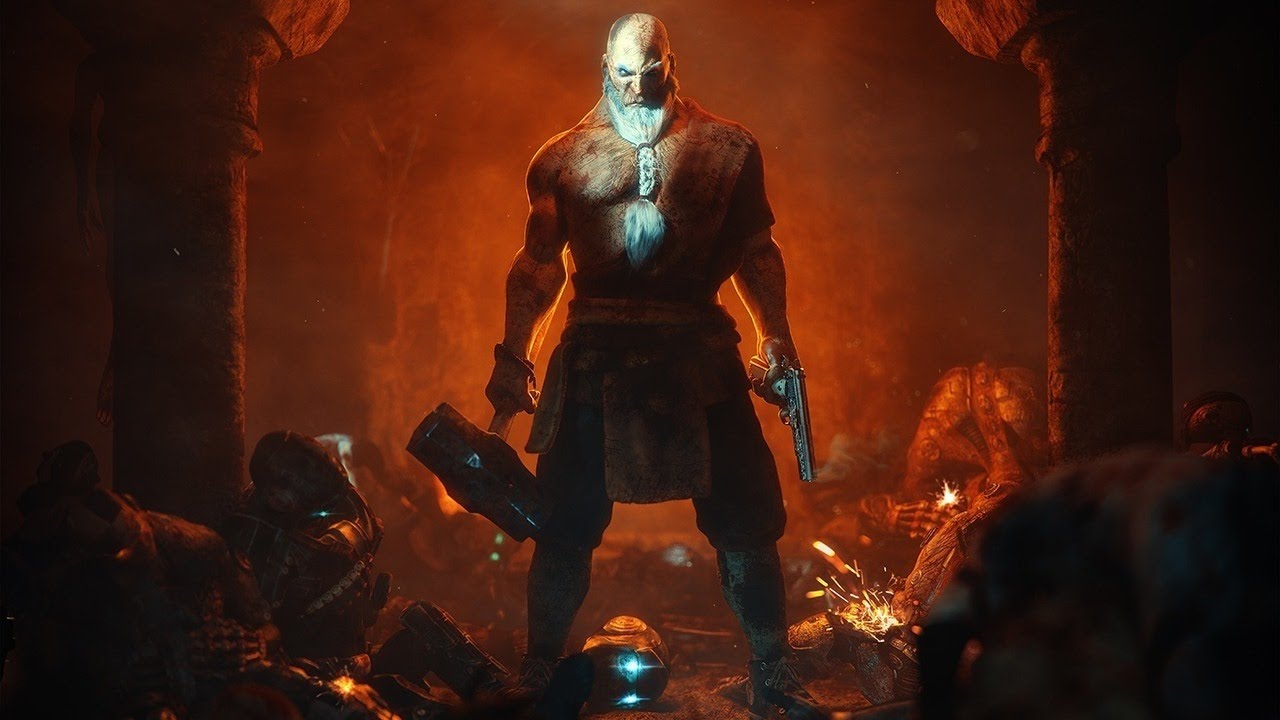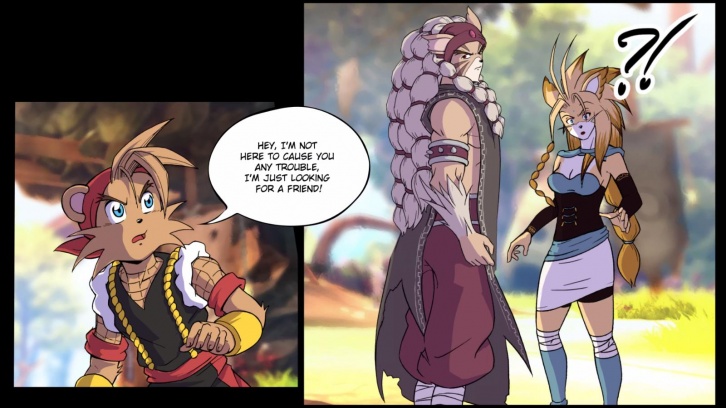In its first few minutes, Redeemer transports the player back to arcade cabinets of the mid ‘90s, not trying to be anything more than a classic, violent brawler. A mandatory introduction begins this massacre, and, within minutes, bones are being crushed, and blood is being spilled. In these moments of simplicity, Redeemer shines brightest—as a pure, bare-knuckle game of fisticuffs.
However, after a strong opening, the title suffers an identity crisis, losing all sense of direction as the game spirals into something alienated from its original intentions.
As with every tasteful brawler, Redeemer presents a brief story that is little more than an excuse for the bloodshed. Players take on the role of Vasily, an ex-mercenary attempting to suppress his addiction to brutality by retreating to a monastery, hidden away among mountain tops.
Twenty years pass before the company Vasily worked for picks up his trail, wreaking havoc on the ancient temples he resides in and murdering his monk brothers. These acts of terrorism spark Vasily’s bloodlust once more, setting him on a clichéd path of revenge and redemption that allows him to let loose. Redeemer never wastes any time on story—though the comic book-styled splash pages used in cut scenes look rather pleasing. Gameplay does the talking in this brutal brawler, and, for the first hour or so, the game succeeds.
Redeemer is enjoyed from a top-down perspective, akin to Hotline Miami, though the constant focus on spilling blood makes the game feel similar to Hatred in overall execution. For the first half dozen levels, Vasily relies largely on punches and kicks to deal serious damage.
The goal is straightforward; the enemy has to die in the most vicious fashion. Everyday mercenaries are sent flying backward with a firm final punch to the abdomen, have their throats ripped out, or spines cracked every so often in a cinematic finisher.
Killing enemies in various ways is the only way to regenerate health, adding a layer of purpose and urgency to the combat. As the player grows comfortable with the isometric point-of-view and simple gameplay, more mechanics are introduced in rapid succession: environmental executions, breakable melee weapons and firearms, counter attacks, and stealth kills.
These additions keep Redeemer from becoming a mindless top-down brawler, yet the game goes overboard with all kinds of changes that eventually cause the focus to shift entirely. Mercenaries come equipped with heavy armor, agile knives, and even flamethrowers, each requiring slightly varying ways to take down.
For example, enemies that block kicks and punches require a charged attack or weaponry to deal optimal damage, and others are to be evaded altogether until they let their guard down. Instead of encouraging a different approach, this variety slows down gameplay, forcing the player to wait and counter incoming attacks or frantically dodge across the screen, shooting enemies from afar.
As this unnecessary variety grows more common, Redeemer loses its footing both in gameplay and in overall style. Zombies start to become the main antagonist, and atmospheric temple scenery gets swapped out for barren laboratories. The game quickly betrays its simple premise. Too many mechanics and ridiculous elements are added, and Redeemer becomes a top-down shooter more than an isometric brawler.
Levels grow far too lengthy, taking up to 40 minutes compared to the earlier levels, which only take about 10 minutes to complete.
Chapters cannot be saved midway through and must be completed in one sitting, thus making the flaws more apparent; the game loses the pick-up-and-play values established earlier in the experience, yet does not become a joyless drag either.
The occasional melee battle is still present, and the Arena mode provides players with more of what the experience is supposed to revolve around. Still, seeing how the first hour promises a no-nonsense brawler experience, the sudden change in overall tone comes across as jarring and forced.
Developer Sobaka set out to make a nostalgic arcade experience, but midway through seemed to realize it could expand its audience by introducing gaming’s most overused trope of killing zombies.
Running on Unreal Engine 4, Redeemer looks stunning—for the first half of the game, at least. Textures are detailed, and the top-down perspective allows the environments to pop, despite some minor blurring. The monastery feels like an ancient place filled with old bridges and worn tiles, while the small ponds and freshly planted trees lend the place a sense of liveliness.
As water ripples, leaves gently rustle, and smoke rises from the ovens, one might even forget the violence for a second if not for the blood splatters and ravaged huts the mercenaries left behind. When Redeemer delves into underground laboratories, the visuals become much less interesting. Environments largely look cold and metallic as the warmth of the monastery is traded for the forced sense of horror and mystery that seems mandatory for any secret facility.
The lighting remains strong and atmospheric throughout the entire adventure, though the title is far more at home in ancient temples than experimental laboratories.
The soundtrack and voice acting in Redeemer are forgettable at best and distracting at worst, though never take away from combat encounters. Music may take a second to kick in and fades away abruptly at the end of a fight, and enemies will taunt Vasily one too many times, though the heavy hitting of fists and the breaking of bones masks most inconsistencies effectively.
Punches and kicks carry a sense of impact, with every killing blow adding a subtle second of slow motion crunching and grunting. Guns kick, wounds gush, batons zap, and fires crackle, with all these environmental cues coming together to strengthen the title’ssense of atmosphere.
Redeemer is best as an unapologetic, old-school isometric brawler. Vasily’s fists and feet pack a satisfying punch, and the brutal, close-quarters combat serves as the strong backbone for this experience.
Despite a strong start, the game stumbles after a handful of fantastically violent levels as it transitions into a twin-stick zombie shooter for the majority of the campaign. Levels become too lengthy and enemy types and numbers venture into the absurd, leaving little of the initial gameplay and overall vibe of the game intact.



